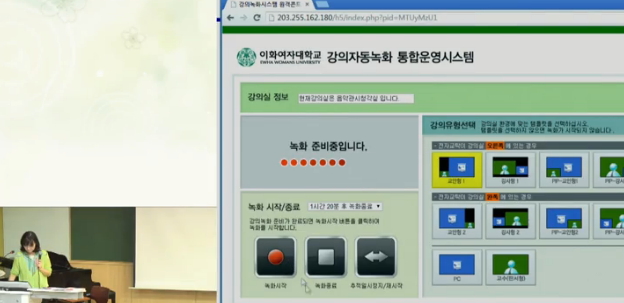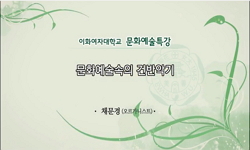Out of all of the musical masterpieces J.S. Bach(1685~1750) left behind, his organ pieces were the most popular. Among those pieces, “Toccata and Fugue in d minor BWV 565” is the most well-known and is the focus of my research. In order to deepe...
http://chineseinput.net/에서 pinyin(병음)방식으로 중국어를 변환할 수 있습니다.
변환된 중국어를 복사하여 사용하시면 됩니다.
- 中文 을 입력하시려면 zhongwen을 입력하시고 space를누르시면됩니다.
- 北京 을 입력하시려면 beijing을 입력하시고 space를 누르시면 됩니다.
https://www.riss.kr/link?id=T13214770
- 저자
-
발행사항
경산 : 대구가톨릭대학교, 2013
-
학위논문사항
학위논문(석사) -- 대구가톨릭대학교 대학원 , 종교음악학과 , 2013. 8
-
발행연도
2013
-
작성언어
한국어
- 주제어
-
KDC
676.5 판사항(5)
-
발행국(도시)
경상북도
-
기타서명
(A) Study on the Toccata and Fugue in d minor BWV 565 by J.S.Bach
-
형태사항
ⅲ, 61 p. : 삽화,악보 ; 26 cm.
-
일반주기명
지도교수: 고승익
참고문헌 수록 - 소장기관
-
0
상세조회 -
0
다운로드
부가정보
다국어 초록 (Multilingual Abstract)
In addition, I carried out my analysis of “Toccata and Fugue in d minor BWV 565” by reviewing the general characteristics of a toccata and a fugue. A toccata has a freewheeling and improvisatory style with full chords and scales. On the other hand, a fugue consists of imitations of repeated themes. Bach’s “Toccata and Fugue in d minor BWV 565” is a compilation of both styles.
Among many of Bach’s masterpieces that portray his creative power, this composition stands out due to its free spirited and emotional style. Toccata and Fugue brings out the best of an organ’s characteristics by employing four toccatas and six fugues.
The toccatas display repetitive melodic figures in subjects and episodes. Likewise, fugues consist of repetitions of subjects, answers, counter points and episodes. Furthermore, its linking parts also have repeating scales, sequences and pedal points which express impressive styles through beautiful melodies, tempo dynamics and overall harmony.
This research covers the life of Bach, organ music, Bach’s musical characteristics across periods, the general characteristics of a toccata and a fugue, and an investigation of “Toccata and Fugue in d minor BWV 565” which gives us insights on how Bach tried to express his music. Finally, through harmonic analysis, we can conclude that Bach focused on musical expression rather than technical precision.
Out of all of the musical masterpieces J.S. Bach(1685~1750) left behind, his organ pieces were the most popular. Among those pieces, “Toccata and Fugue in d minor BWV 565” is the most well-known and is the focus of my research. In order to deepen my research on “Toccata and Fugue in d minor BWV 565”, I looked into the life of Bach the composer, how he composed organ music, how he expressed it, and its effects and influences across the periods.
In addition, I carried out my analysis of “Toccata and Fugue in d minor BWV 565” by reviewing the general characteristics of a toccata and a fugue. A toccata has a freewheeling and improvisatory style with full chords and scales. On the other hand, a fugue consists of imitations of repeated themes. Bach’s “Toccata and Fugue in d minor BWV 565” is a compilation of both styles.
Among many of Bach’s masterpieces that portray his creative power, this composition stands out due to its free spirited and emotional style. Toccata and Fugue brings out the best of an organ’s characteristics by employing four toccatas and six fugues.
The toccatas display repetitive melodic figures in subjects and episodes. Likewise, fugues consist of repetitions of subjects, answers, counter points and episodes. Furthermore, its linking parts also have repeating scales, sequences and pedal points which express impressive styles through beautiful melodies, tempo dynamics and overall harmony.
This research covers the life of Bach, organ music, Bach’s musical characteristics across periods, the general characteristics of a toccata and a fugue, and an investigation of “Toccata and Fugue in d minor BWV 565” which gives us insights on how Bach tried to express his music. Finally, through harmonic analysis, we can conclude that Bach focused on musical expression rather than technical precision.
목차 (Table of Contents)
- Ⅰ. 서 론 1
- 1. 연구목적 1
- 2. 연구방법 3
- Ⅱ. 본 론 4
- 1. J.S.Bach의 생애 4
- Ⅰ. 서 론 1
- 1. 연구목적 1
- 2. 연구방법 3
- Ⅱ. 본 론 4
- 1. J.S.Bach의 생애 4
- 2. 바흐의 오르간 음악 7
- 3. 바흐의 시기별 작품과 특징 11
- 4. Toccata와 Fugue의 일반적인 특성 14
- 1) Toccata 14
- 2) Fugue 18
- 5. J.S.Bach<Toccata and Fugue in d minor BWV 565>의 분석연구 23
- 1) Toccata and Fugue in d minor BWV 565의 구성 23
- 2) Toccata and Fugue in d minor BWV 565의 분석 24
- (1) Toccata 24
- (2) Fugue 33
- Ⅲ. 결 론 58
- 참고문헌 60












